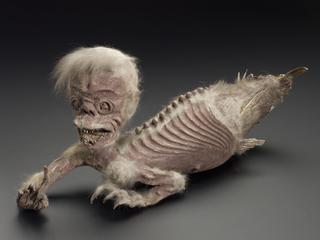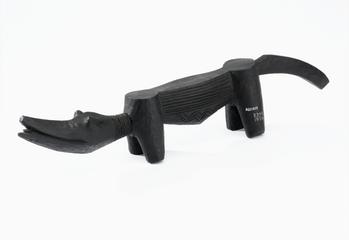




Penitent's spiked iron belt, European, 1501-1800
This belt of spiked metal was worn around the thigh as a type of penance. Penance in the form of prayers is carried out by some Christians in the hope of being forgiven for their sins. Christian belief during 1501-1800 taught that illness and disease were the result of sin. Penance was carried out by fasting and, in some cases, by inflicting physical harm on one’s self.
At the time of the Black Death – and during later outbreaks of plague – groups of fanatical penitents would travel from town to town, beating themselves, wearing such spiked devices and flagellating their skin. These deeds were presented as acts of repentance for the world’s sins – the penitents believed God was punishing these sins by means of the plague.
Details
- Category:
- Ethnography and Folk Medicine
- Collection:
- Sir Henry Wellcome's Museum Collection
- Object Number:
- A88804
- Materials:
- iron
- Measurements:
-
overall: 16 mm x 640 mm x 70 mm, .16kg
- type:
- belt
- credit:
- Wellcome Trust (Purchased from Stevens)




